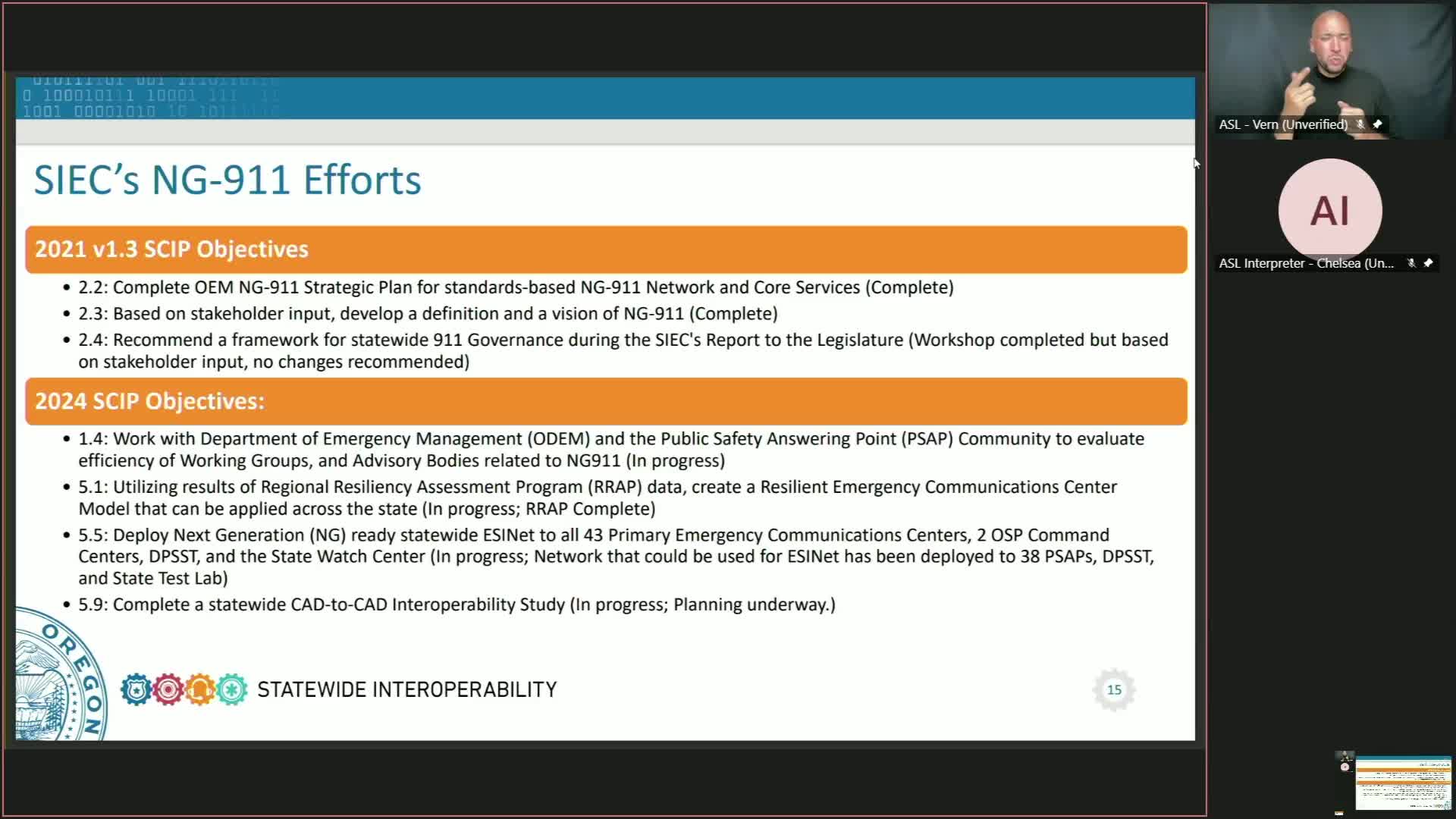Oregon updates 2024 NG911 strategic plan for emergency communication networks
March 28, 2025 | Information Management and Technology, Joint, Committees, Legislative, Oregon
This article was created by AI summarizing key points discussed. AI makes mistakes, so for full details and context, please refer to the video of the full meeting. Please report any errors so we can fix them. Report an error »

The Joint Committee on Information Management and Technology convened on March 28, 2025, to discuss critical updates regarding Oregon's Next Generation 9-1-1 (NG 9-1-1) initiatives. The meeting focused on strategic planning, governance frameworks, and the ongoing efforts to enhance emergency communication systems across the state.
The committee reviewed the objectives outlined in the 2024 Statewide Communication Interoperability Plan (SCIP), which includes collaboration with the Department of Emergency Management to assess the effectiveness of existing working groups. A significant point of discussion was the ongoing study by the Cybersecurity and Infrastructure Security Agency (CISA) aimed at evaluating the resiliency of IT and emergency communications networks. This study is expected to inform recommendations for improving the state's 9-1-1 centers and identifying existing gaps in service.
Another key objective is the deployment of the Next Generation Emergency Services Internet Protocol Network (ESINET) to all 41 primary 9-1-1 centers in Oregon. This initiative aims to modernize the state's emergency response infrastructure, although adjustments are needed due to recent consolidations of some centers.
The committee also addressed the interoperability of Computer-Aided Dispatch (CAD) systems, which is currently under study. This effort seeks to ensure that different CAD systems can communicate effectively, enhancing coordination among emergency responders.
Concerns were raised about the number of public safety answering points (PSAPs) in the state, with some committee members suggesting that the current number is excessive and leads to inefficient resource allocation. The discussion highlighted the need for potential consolidation to improve service delivery and upgrade capabilities across the board.
The meeting also touched on the importance of modernizing communication equipment for first responders. The committee emphasized the need for dual and tri-band radios that meet national standards, allowing responders to operate on multiple frequencies without carrying multiple devices. The cost of these radios, which can exceed $6,000, was noted as a significant barrier to implementation.
In conclusion, the committee's discussions underscored the ongoing efforts to enhance Oregon's emergency communication systems through strategic planning, technological upgrades, and improved governance. The next steps will involve further evaluations of existing systems and the potential for consolidating resources to better serve the state's emergency response needs.
The committee reviewed the objectives outlined in the 2024 Statewide Communication Interoperability Plan (SCIP), which includes collaboration with the Department of Emergency Management to assess the effectiveness of existing working groups. A significant point of discussion was the ongoing study by the Cybersecurity and Infrastructure Security Agency (CISA) aimed at evaluating the resiliency of IT and emergency communications networks. This study is expected to inform recommendations for improving the state's 9-1-1 centers and identifying existing gaps in service.
Another key objective is the deployment of the Next Generation Emergency Services Internet Protocol Network (ESINET) to all 41 primary 9-1-1 centers in Oregon. This initiative aims to modernize the state's emergency response infrastructure, although adjustments are needed due to recent consolidations of some centers.
The committee also addressed the interoperability of Computer-Aided Dispatch (CAD) systems, which is currently under study. This effort seeks to ensure that different CAD systems can communicate effectively, enhancing coordination among emergency responders.
Concerns were raised about the number of public safety answering points (PSAPs) in the state, with some committee members suggesting that the current number is excessive and leads to inefficient resource allocation. The discussion highlighted the need for potential consolidation to improve service delivery and upgrade capabilities across the board.
The meeting also touched on the importance of modernizing communication equipment for first responders. The committee emphasized the need for dual and tri-band radios that meet national standards, allowing responders to operate on multiple frequencies without carrying multiple devices. The cost of these radios, which can exceed $6,000, was noted as a significant barrier to implementation.
In conclusion, the committee's discussions underscored the ongoing efforts to enhance Oregon's emergency communication systems through strategic planning, technological upgrades, and improved governance. The next steps will involve further evaluations of existing systems and the potential for consolidating resources to better serve the state's emergency response needs.
View full meeting
This article is based on a recent meeting—watch the full video and explore the complete transcript for deeper insights into the discussion.
View full meeting
